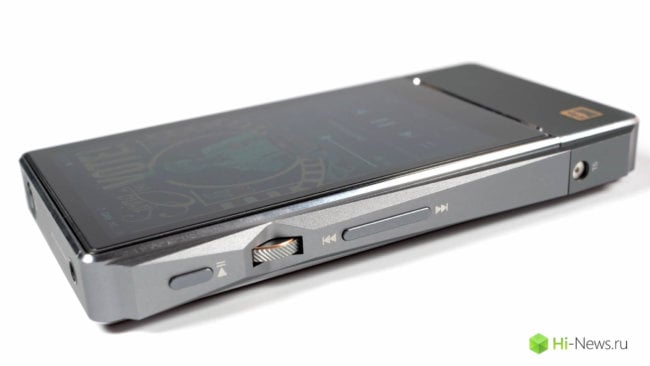
In modern society, with its established tradition of over was impossible to produce one product and feel confident (of course, if you are “Hoegaarden Brewery”). The market of personal audio is no exception to the principle of “go or die” it also provides a fully. Why FiiO decided not to tighten and updated its flagship X7.
As is often the case, nothing supernova in the company do not have, the main burden of innovation in this year fell on the third generation of the X5, no wonder gather a lot of prestigious design awards. Looking at this achievement X5-3, FiiO decided that the new X7 need this side socket. Mark 2 it got. About the change of design I will cover in the appropriate section, but for now let’s talk about the filling. The player still works 4-core RK3188 processor, of course, not the new one, but for portable players is more than enough. To help him cope with hardship and pain, FiiO added device RAM, increase the total volume to 2 GB. To please the audiophile, the DAC has been upgraded to the Pro version of the ESS Sabre 9028, also added a third master oscillator, now DSD frequency is a multiple of 44.1 kHz and 48 kHz tatuada independently. Slightly increased the volume of the battery (enough to offset the voracity of more modern DAC) and added support for Quick Charge. For owners of large collections made support for the second memory slot, which, combined with 64 GB on Board gives a very impressive amount of storage. Processed and the internal layout, with shielding, improving protection from interference when working wireless modules.
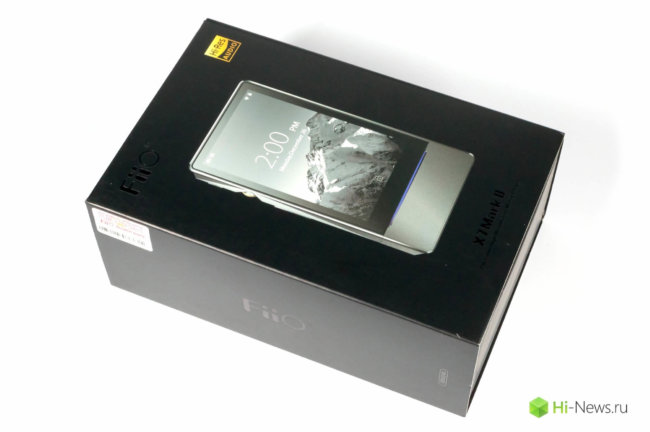
Also took into account the complaints of AM1 and, in the spirit of fashion trends of the “day without a balance”, was equipped with X7 Mk2 out of the box a special version of the balanced amplifier AM3A with reduced power (which has benefited and consumption, and noise).
The price increase did not, player in the U.S. are still sold for the same $ 650, but how much it will cost from our distributors, I don’t know (the only thing we can say for sure is that the official vendors it will be more expensive).
Specifications
- Processor: 4-core RK3188 @ 1.4 GHz
- RAM: 2 GB
- DAC: ESS9028 PRO
- OH: 2 X OPA1612 + 2 × OPA926
- OS: Android 5.5.1
- WiFi: 802.11 b/g/n (supports 5 GHz)
- Bluetooth: Bluetooth V4.1, APT-X
- Screen: of 3.97″, TFT IPS, 480 × 800, 16.8 M colors
- Built-in memory: 64 GB (available user ~55 GB)
- External storage: 2 x MicroSD up to 256 GB
- Input: MicroUSB (supports QuickCharge USB DAC, iPod)
- Outputs: linear, optical and coaxial S/PDIF
- The outputs of the complete amplifier: 3.5 mm to 2.5 mm balanced
- Battery: 3800 mAh
- Charging time: up to 2.5 hours with the usual adapter, less than 100 minutes from QC
- Time (approximate): about 8 hours with a conventional outlet AM3A, about 7 with balanced
- Support lossless formats: APE, ALAC, AIFF, FLAC, WMA
- Support lossy formats: MP3, AAC, WMA, OGG
- DSD support: DSD64/128 (ISO, DSF, DFF), DXD: 352, 8 thous kHz
- Dimensions: 128,7 mm x 67,2 mm × 15.5 mm
- Weight: 212 g
Line out
- Frequency range: 5 Hz ~ 70 kHz (- 3dB)
- Total harmonic distortion+noise: <0,0008% @ 1 kHz
- Channel separation: ≥103 @ 1 kHz
- The ratio signal/noise: ≥119 dB
- Dynamic range: >114 dB
- Voltage: >1.8 Vrms
3.5 mm output
- Frequency range: 6 Hz ~ 60 kHz (- 3dB)
- Total harmonic distortion+noise: less than 0.003% @ 1 kHz
- Channel separation: ≥73 @ 1 kHz
- The ratio signal/noise: ≥116 dB
- Output impedance: <1,2 Ω
- Voltage: >6 V p-p
- Power: ≥150 mW @ 32Ω, ≥17 mW @ 300Ω
Balanced output
- Frequency range: 6 Hz ~ 60 kHz (- 3dB)
- Total harmonic distortion+noise: less than 0.003% @ 1 kHz
- Channel separation: ≥97 @ 1 kHz
- The ratio signal/noise: ≥119 dB
- Output impedance: <1.7 Ω
- Voltage: >10 Vp-p
- Power: ≥400 mW @ 32Ω, ≥63 mW @ 300Ω
Packing and delivery
Box FiiO learned to do even 5 years ago. Of course, no wooden boxes or is there a leatherette-covered plywood there. Traditional black cardboard core boxes and the black “dust cover” with minimal printing. Inside, just under the cover is the player, on a layer below — the included accessories. The kit includes:
- Screwdriver to change the amplifiers
- Spare cogs
- Alternative side panel for amplifiers
- Adapter for coaxial output
- A MicroUSB wire
- Silicone case, immediately put on the player
- Black thread with red leatherette cover
Also from the factory on the player screen is pasted protective glass (for which the manufacturer thanks, I always glue unevenly and bubbles).
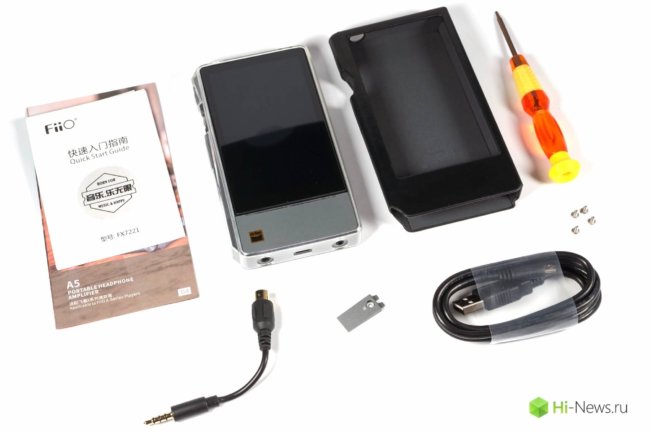
In General, the package is more than good, but do not forget about the accessories: dock, remote control, amplifier K5 and everything else is a nice plus player. The kit, by the way, put the booklet is all of this stuff, for some reason, also mentioning about the headphones F1 and F3, although they are clearly not vapor X7-2.
Design
The main change from the design we can see, in the left pane appeared the same as X5-3, the line with rocker navigation tracks, the volume wheel and play/pause. Also visible the “move” button on the top face and add around her signature red ring (FiiO decided to reflect upon its own identity). In fact, the design changes a little deeper, they give the X7 a second generation of more “adult” look. Left the tabs on the front and back panels that distinguished the first generation, the screen is now made almost flush with the body. Front panel logo has disappeared (step dare not all “big players”), slots for memory cards made with the trays, and it looks much more impressive. If we add to this high-quality Assembly (includes good click buttons, no loose wheel with a quality encoder) and the fit, now the FiiO can be compared with the players of the top echelon. Let’s see how the model behaves for a few months of operation, but for example my A&K AK320 the volume wheel works a little worse than this player.
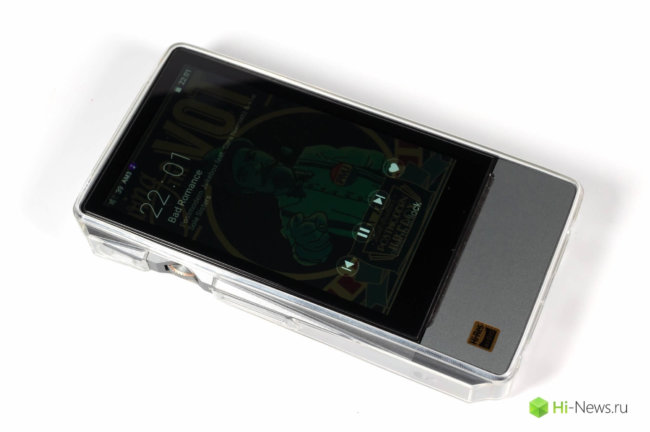
Of the controls that I mentioned above, there are still universal socket on the top panel (linear and coaxial optical outputs were added) and the connectors on the amplifier (normal and balanced). There and the bottom is a MicroUSB connector. Of course, in our age of rapid development of USB-C would like to see it, but this standard can not bring everything required for proprietary docking stations, so you have to use a 11-pin MicroUSB, compatible with the standard.
Perhaps, X7 of the second generation is for me the ultimate pocket-size device. If he had been just a little more, carry it in jeans pocket it would be unrealistic, and so a player with a little work, but is still there. New asymmetrical design puts the device ergonomics (from the first generation player is sometimes forgotten, that the answer button on each side). Then the device itself occupies a convenient position in the hand and fingers immediately lay down on the control buttons.
Of course, the second revision has retained the compatibility with the amplifier modules of the first model. To link them visually with a new side panel, the developers made part of the ledge, falling to the amplifier, removable. Such decision allowed to kill both birds with one stone — and design, and backward compatible. If you plan on using the X7-2 K5 offers a slim version of the nozzle included in the kit, the player will stand in the dock.
If you compare the new X5-3, it can be noted that the “younger brother” looks more catchy — absolutely straight angles, interesting texture front and back panels, black color makes it more “wow-effect”. Steel “titanium” color X7-2 gives the device more discreet, as well as suit often emphasizes the social status of the person.
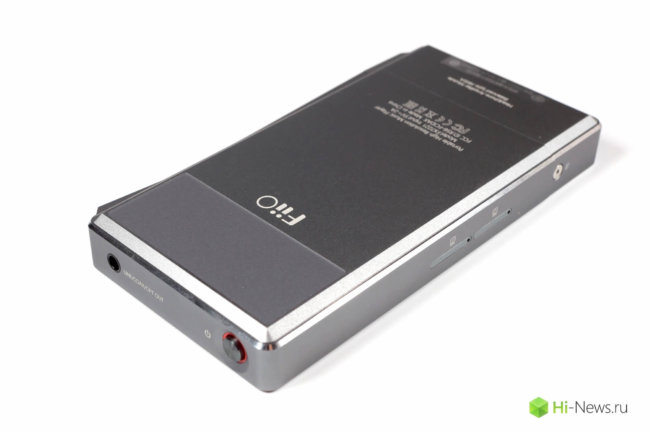
I can not mention the presence of the QuickCharge feature. In my tests with Pinnacle MEEAudio P1 in the role of load player worked 8 hours and 10 minutes with normal release and 7 hours and 5 minutes with balanced. The result is not a record, but that’s the price of using the “full” 9028 in a non-mobile version. Thus, the ability to charge a player an hour and a half to 100% becomes a very useful addition to functionality.
Firmware
Of course, the main management work falls on the touch screen (it has improved, resolution has remained the same, but the contrast, the stock of brightness and viewing angles the grown). Under the screen is still gently blinking strip-indicator, you can still disable in the menu.
In the role of operating system as before, working Android, but since the release of the first generation X7 version increased to 5.1.1 (the story was long and difficult). FiiO are developing a firmware for all three models with Android on a shared code base, so functionally they are similar, and the errors are fixed once for all.
Of course, Android is not a perfect operating system from the viewpoint of battery saving and stability, but to date it’s the only way without problems implement support for streaming and functions like USB-OTG. So I’m 99 percent sure that the future of portable audio is for this OS (except for the most inexpensive solutions).
In X7 Mark II, like its predecessors, there are two modes — Android and Pure Music, but the difference between them consists only in the fact that in the latest app player is a substitute for launcher OS, removing thus from the user’s eyes (but not from the device memory) demanding applications.
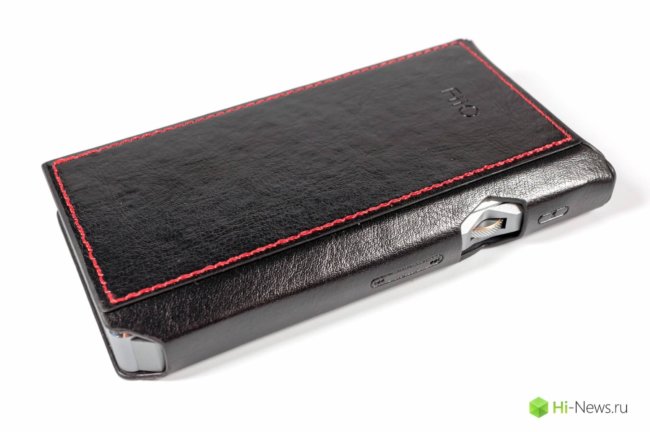
Of course, the media player application, called simply Music FiiO, is a Central element of the firmware, and understand it. For X5-3 has tested the ability to automatically update the player without the upgrade the whole firmware, soon this feature will get other models that will allow you to update the program more often.
Music for the FiiO X7-2 got a new light theme, which gave the firmware a fresh feeling, but overall the functionality is already familiar to those who enjoyed the players of Android.
Immediately after launch (player loading a bit faster and takes 44 seconds) of the user meets a familiar screen. Above is the cover of the current album, tap on it opens the playback screen. Below are three buttons: playlists, media library and DLNA. Traditionally, the library allows you to view the complete list of tracks, albums, artists, genres or folders. Swipe across the track/folder allows you to perform various operations, type deletion. There is also a handy search (here it is, plus a touch input).
Back to the main screen. Under the media library buttons on the main screen there are lists of most popular, recently added and recently played tracks. In the upper left corner there is a button, clicking on it opens the panel with the basic settings of the player (scan media library, select themes, lock screen and several other options). Here you can change the theme if you got bored and decided to see how it looked the very first firmware last X7. At the bottom of the list are effects from VIPER. As before, some of them free, part — costs almost 50 cents apiece, but for fans to “tweak the sound” is still an interesting option. By the way, the lock screen with a full-size album cover — very good. Another cool “trick” the player — automatically download covers and lyrics on Wi-Fi.
Part of the expected settings made in the “shutter” opened by a swipe from the top edge of the screen. Here are the switches for wifi, Bluetooth, restart modes (Android/Pure Music) and a number of other options.
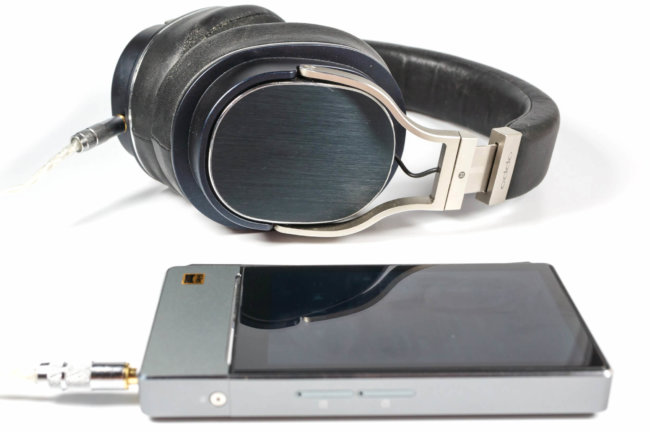
Of course, not without the third place settings, familiar to almost all of the Android settings panel offers standard options like clock and input language, and the unusual choice of one of 7 filters supported 9028, channel balance and performance mode. The latter, incidentally, is an innovation. You can choose between balanced regime, providing the best battery life and speed, designed for playing the most huge of DSD and other not really useful formats.
The playback screen is pretty minimalistic, all advanced options are hidden behind the button in the lower-right corner that opens a menu. Here you can delete a track, add it to a playlist, rotate the equalizer (traditionally better not) or view information about it. Tap on the screen allows you to toggle the display modes are: album cover, brief information about the track, lyrics or a nice VU meter. A little-known feature — swipe from the left edge of the screen opens with the tracks within the current playlist.
In General, the IOS in recent years have been greatly changed in the direction of speed and stability, no major bugs or lags I didn’t notice. Of course, some bugs in it definitely will be, especially when working with third-party software, but it charges for “full Android” on Board, the alternative can only be restricted functionally firmware a La the A&K and theBit.
Mode Android I almost never switch but from a positive change worth noting is the integration of Google Play and is necessary for most Google Services.
In General, describe the functions of AT can be long, but I do not set myself the goal to write a textbook “FiiO X7 Mark II for dummies” — the firmware is quite simple, so deal with it for a couple of hours, and I already wrote more than 11 000 characters, but not got to the main. Time to move on.
Sound
To listen to the device used the following headphones: iBasso IT03, 99 Meze Classics, Audio Zenith PMx2, Noble Kaiser Encore, Campfire Audio Andromeda, 64 Audio U12, HUM Pristine and others.

The main “claim” put forward by the first generation FiiO X7 the sound was due to the regular amplifier module AM1. The company has considered it and has completed the player balanced AM3A. The “original” AM3 is marked by a significant voracity and noise with sensitive headphones, so the FiiO has reduced its capacity, successfully reducing the impact of both problems. The service user continues to be the entire lineup of amplifiers (including my favorite AM2), but here we will talk about the stock configuration. General feed X7 is still neutral, but is devoid of excessive dryness.
Bass this player is neutral, without attempting to focus. It is beloved by many, without pumping, creating the effect of “mass”, so that fans of elevated pressure in the bottom (sounds like a euphemism) neutral AM3A will not work, and in General it is better to look at other players. Skate X7 Mark II — reliability, control, and texture, however, when necessary, the player copes with the delivery of the necessary amounts of bass without visible problems, talking about lightness here is not necessary (except by the standards of the hopelessly ruined your hearing and taste basketsto). Of course, deep bass are also present and played without problems, this part of the range — a marked improvement compared to the first generation X7.
The midrange also tuningova in the direction of impartiality, the player tries to play everything as is, without smoothing or adding emotion. On the other hand, avoids novelty and rolling in dry monitormost, balancing somewhere between these faces. Of course, about the total impartiality of the DX200 is not talking, but X7 Mark II also places high demands on the material because you will hear exactly what is written, and, like any truth, this knowledge is not always happy. However, to buy an expensive player and to listen to a bad recording — the whole idea is so-so, but in this case for “wanting strange” is a good and humane module AM2A… something I digress. Have X7 Mark II good to build an imaginary scene, it is not huge, but is clearly not suffering from stiffness, and this applies both depth and width. On some tracks the singer pushed a little forward, which adds the flow of the drama. Speaking “in General”, the transfer of nature of tools — reliable, as well as emotional well recorded tracks, so on a good record player sounds very vovlekayut.
The high-frequency range is another area besides the deep bass, where the impact of the new DAC (and, possibly, sets of generators) are especially noticeable. Player copes well with working attacks and with a resolution high frequency range, the length is also improved. Fade a little blurry, and the General “layering” of the RF lags behind top-end models, but it’s not that noticeable without a direct comparison with something from the category ≥ $ 1,000. Those who do not like RF, the player, naturally, will not do, attempt to hide something or specifically to alleviate the player does not, in General, is beneficial to its neutral flow.
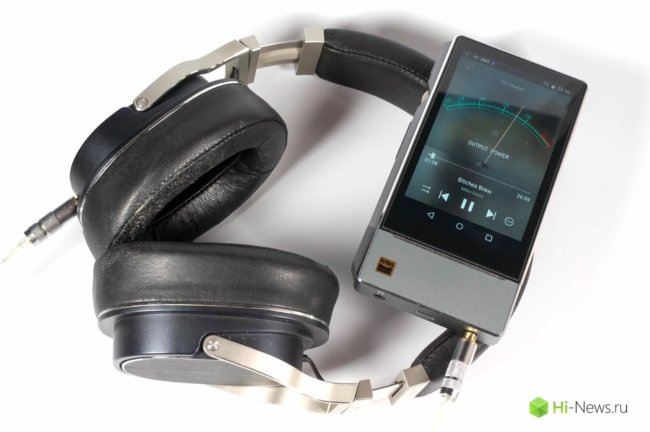
Of course, will not do this review without comparisons. This time I limited models only on Android and only those that I have available to write these sections of the memory — occupation unpromising.
FiiO X7 of the first generation. Of course, this is the first and most important comparison. I compare these players on the same amps, using the AM2 AM3A and the. I can tell you that the difference is not huge, but clearly audible. The second generation is working better bass, especially the lower registers, Mark II better speed and textures. Also much better sound, treble has improved and attacks, and length. In General, if you already own a first generation player, throw him urgently to upgrade — it makes no sense, the update here is still evolutionary, not revolutionary. If you are just eyeing the flagship FiiO, then I still advise to pay more for the Mk2, for a total gain in sound and weight improvements in the gland worth it.
FiiO X5-3. As I wrote above, younger model, perhaps it looks more impressive, and more pocket-sized form factor speaks in its favor. If we compare sound, there are different approaches to building sound. “Five” plays more together, with a nice touch of darkness and a smooth, comfortable treble. “Seven”, as befits the flagship, not trying to change anything in the flow, but rather seeks to play a more neutral, as if removing myself from the final result.
iBasso DX200. Compared to AMP1. Of course, DX200 plays better — more scathing bass, more elaborate RF, the difference is not huge, but it is. On the other hand, it is worth noting that DX200 is even more critical to the quality of records that are larger in size (for me, the X7 is still included in the category of handheld devices, and DX200 are already there), and is more expensive. So it is necessary to choose on the basis of whether you sound, and how much quality material you listen to.
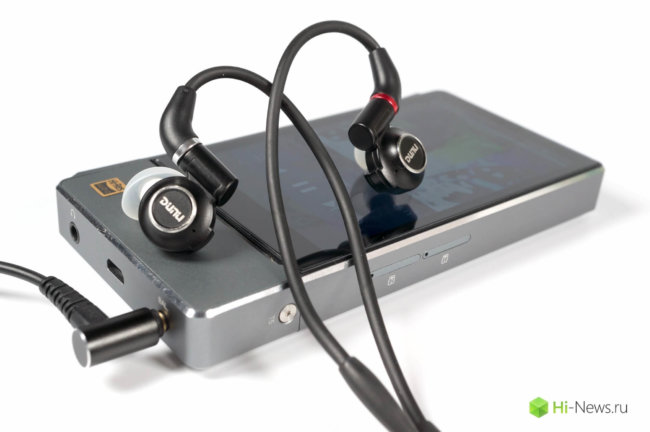
Compatibility
Reserve power AM3A enough for the vast majority of reasonable applications. But exactly this is the advantage of a modular design, why would you want huge power or, conversely, something weak but long-lasting — you can get it. Therefore, the player can be adapted to virtually any model of headphone.
Stylistically, the new seven is quite versatile, provided of course that the owner prefers neutral flow. In General, with players of a similar level desired coloration sound better to with headphones. The quality of the record player is quite critical, somewhere in the 8 out of 10.
Traditional tracks are examples
Dolores O’riordan — Human Spirit. A great singer with the alias name known to us primarily as the singer of the hit “Zombie”. Solo career, she reveals her more lyrical side, and, as often happens, the ex-rock performers, the track is quite restrained in form but in fact, this restraint hides a subtle emotional game, which can only reveal technical source type X7-2.
Green Day — Wake Me Up When September Ends. As stated in the title, September has ended and it’s time to Wake up. Wake up and pay tribute to the legend of pop-punk. Perhaps since the heyday of Billy idol, was not the team that so convincingly mixing the rebelliousness of punk with edgy pop music. Green Day adjusted in every step, starting with the pathetic Slesarenko clip and ending with impeccable recording quality. It is the latter factor allowed me to take this track in a compilation, the flagship FiiO plays it vigorously, causing the downright to plunge into the track.
Diane Coffee — Poor Man Dan. And, perhaps, another pop track, this time a very interesting option California pop full of psychedelic effects, sometimes it even sounds like something from the classic Abbey Road. Behind the rustic exterior lies a very dense and rich melody, rasslushat which is wholly and helps the hero of today’s review.
Insights
Very often in reviews of FiiO products cannot help drawing Parallels with Apple. Both companies clearly are among the leaders in its market segment in terms of sales and the level of solutions. Both companies are active, but are often inadequate criticism, which, however, does not prevent them to set record after record. Both companies are trying to develop our line of evolutionary that it is possible. Returning specifically to X7 Mark II — again we have one of the strongest players in its segment, is not devoid of flaws, but it is more than compensating their merits.
Overview of player FiiO X7 Mark II — successor of the traditions
Pavel Dmitriev